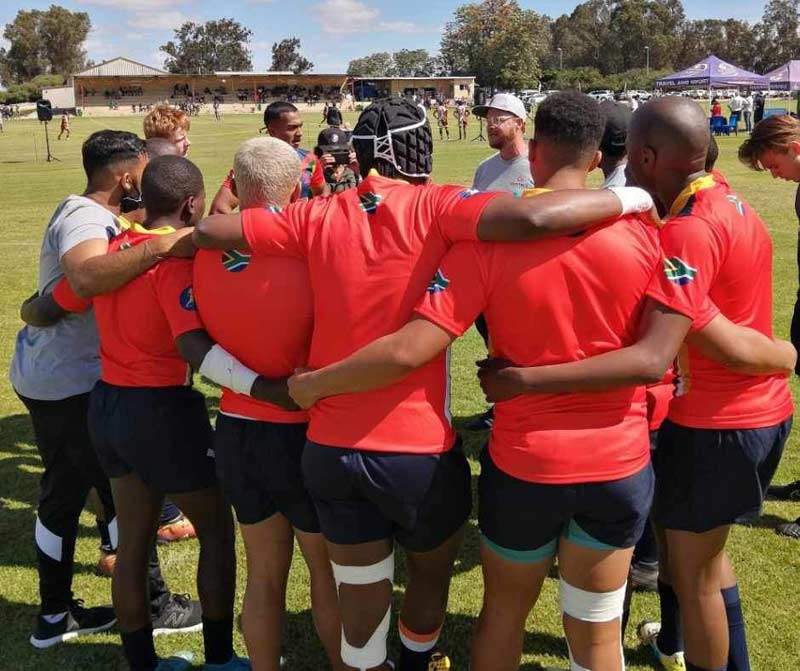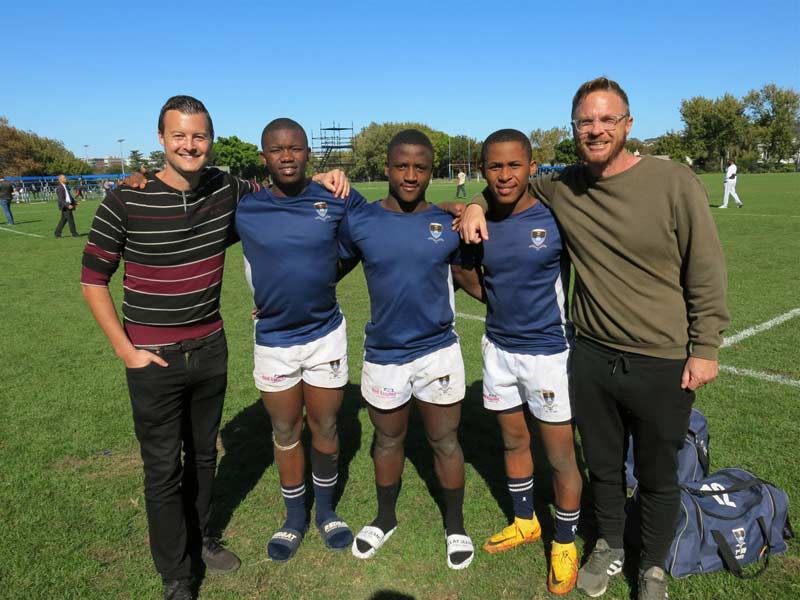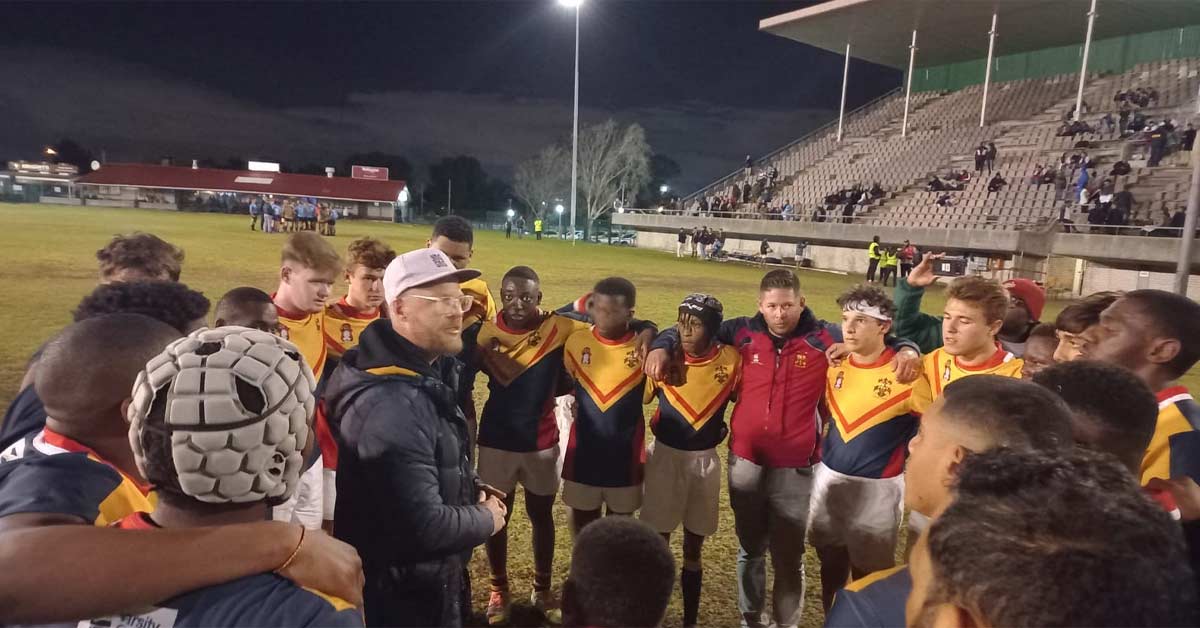Murray Ingram is a strength and conditioning coach with his own facility and programs in Cape Town/South Africa. He has more than 20 years of experience preparing youth athletes for professional sports like rugby and tennis. He is the owner of the Connect High Performance Center and leads the Connect Sports Academy, a project to give young athletes from underserved communities a pathway into professional rugby. Connect Sports Academy is dedicated to providing consistent access to quality resources and opportunities for disadvantaged young people, creating a high-performance, pro-transformation environment in which they can reach their full potential on and off the sports field.
Freelap USA: You’re a strength and conditioning coach with your own high-performance center and a youth academy mainly developing tennis and rugby players. Not many S&C coaches have this experience, but it’s a very valuable one for all of us in the context of long-term athletic development: You have coached young rugby players basically from primary school until they got their first professional contract and call-up for a senior team. What are your main learnings and experiences starting an athletic development program with primary school kids and developing those same kids into pro athletes?
Murray Ingram: It has definitely been a journey! We started the Connect Academy in an area called Khayelitsha in Cape Town eight years ago. Khayelitsha is a township created under the Group Areas Act during apartheid. There are now more than a million inhabitants living there, with very few sporting and recreational facilities. We trained on a dusty municipal field for the first couple of years before we moved to our Connect Performance facility four years ago.
The fact that we had literally no resources when we started the academy means that we’ve always had to be innovative with our training methods. Coupled with the socio-economic backgrounds of our participants, this has meant that our approach has had to be very holistic and people-centered. For example, one of our first challenges was that many of the young kids who pitched up to our training sessions were undernourished. So, we had to ensure a meal was available every time we trained. Situations like this have given us a real-world understanding of what “buy-in” really looks like.
What many coaches still refer to as ‘soft skills’ are actually the things we value most as coaches, says @murrayingram. Share on XWhat many coaches still refer to as soft skills are actually the things we value most as coaches. Our success has been underpinned by an approach that always acknowledges the lived experiences of our participants. I think that’s something that many sports coaches and conditioning coaches still battle to grasp.
We have had a long-term athletic development approach from day one, and in the past few years, that has really started to pay dividends. Some of our slowest 11-year-olds are now some of the quickest and most agile athletes in our system! We also place a strong emphasis on the development of individual decision-making skills, whereas a lot of developmental coaches still seem to be focused on playing patterns or chasing numbers in the weight room.
Freelap USA: The young athletes who train at Connect Academy have different cultural and socio-economic backgrounds. Can you explain how that influences your program and your education and coaching philosophy?
Murray Ingram: Celebrating diversity is a founding principle of our athletic program. The majority of our athletes come from disadvantaged backgrounds, and I am constantly learning about the contrasts between their lived experiences and my own.

South Africa is one of the more unequal societies in the world, and this is very apparent in youth sports. Affluent, historically advantaged institutions dominate youth rugby. Our academy’s primary task is to address the imbalance that exists in our sporting landscape.
We still face enormous challenges when it comes to the accessibility of resources and opportunities in sports in South Africa. However, our experiences over the past eight years have given us much evidence that success is possible. What has been heartening is how easily many of our more privileged athletes have assimilated into the program. Sport really is such a vital component of social cohesion.
Freelap USA: What needs to change and transform in the field of coaching education and the professional development of strength and conditioning coaches in the context of social skills and creating buy-in with athletes?
Murray Ingram: I’m fascinated by the evolution of our industry. I’ve had a very unconventional coaching career. I’m 45 this year—I started coaching sports when I was 19, and I started working in a gym when I was 21. When I started out, I was using old-school bodybuilder methods. Then, in my mid-twenties, I discovered guys like Mel Siff, Paul Chek, and Charles Poliquin, who ignited a flame in my consciousness that has just gotten brighter as time has gone on.
Twenty-five years later, I still have a “beginner’s mind” attitude toward coaching. I love the idea that the true art of coaching is to make yourself redundant. I have a thirst for knowledge, and over time I’ve grown to understand my strengths and weaknesses. I thrive in a complex environment and especially one where I’m dealing with the day-to-day challenges athletes face. Because of the meandering path I’ve taken, I’ve always been somewhat of an industry outsider, and it has given me a lot of perspective. There is a lot of groupthink and confirmation bias.

There’s still much too little emphasis on the “human” elements of coaching. Coaches like Brett Bartholomew and the people at ALTIS are leading a critical discussion about what good coaching really looks like. It should always be about the person, first and foremost. I’m constantly disappointed by how little value many coaches place on getting to know their athletes. Instead, the industry has taken a data-driven approach that often strips young athletes of their identities.
Good coaching should always be about the person, first and foremost. Instead, the industry has taken a data-driven approach that often strips young athletes of their identities, says @murrayingram. Share on XFreelap USA: You’re not only working with youth athletes but also professional rugby players like Seabelo Senatla on a private basis, even during the season. What are the three most essential components of your coaching approach for players with a high training age and a very busy training and game schedule?
Murray Ingram: I started working with senior professionals by chance. They literally just started coming to me! In the beginning, I wasn’t even sure why. After a while, I realized that many senior guys, especially the world-class ones, have such a solid understanding of their training needs that they’re often left frustrated by the one-size-fits-all approach to S&C in the team environment. They want to be co-contributors to their programming.
The most important thing I do for them is listen to them. I give constructive feedback; I advise them on things like recovery, load management, and mobility. I love how driven the senior guys are. They know what they want and are pretty uncompromising about certain things. I’m fascinated by human consciousness and how it plays out in the high-performance environment.
Many of the senior athletes I work with also play an active role in mentoring some of our junior athletes. I think modern athletes are no longer willing to accept the authoritarian approach that has been prevalent in the team sports environment. Coaches are going to have to adapt to that institutional shift.
Freelap USA: Many of your athletes play collision sports like rugby, and you even have a wrestling coach on your coaching staff at Connect Academy. How do you implement wrestling into your athletic development program and progress with contact prep, especially pre- and during adolescence?
Murray Ingram: Our young athletes spend a lot of time doing fundamental movements like crawling, rolling, falling, etc. We try to get everyone to do at least one weekly session on the mats.
I’m amazed by how little emphasis there is in rugby on proper contact skills and techniques and body awareness. Aimlessly hitting tackle bags isn’t contact skills training, says @murrayingram. Share on XI’m amazed by how little emphasis there is in rugby on proper contact skills and techniques and body awareness. Aimlessly hitting tackle bags isn’t contact skills training. Once a rugby player spends some time learning proper takedown techniques, postures, and shapes, you immediately see the difference on the field. It’s just another example of why it’s more important to spend time on skills development than tactics when it comes to developmental athletes.
Since you’re here…
…we have a small favor to ask. More people are reading SimpliFaster than ever, and each week we bring you compelling content from coaches, sport scientists, and physiotherapists who are devoted to building better athletes. Please take a moment to share the articles on social media, engage the authors with questions and comments below, and link to articles when appropriate if you have a blog or participate on forums of related topics. — SF





